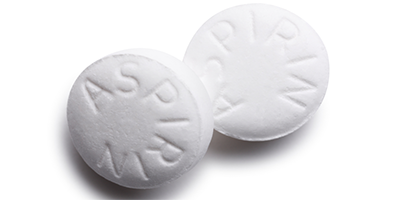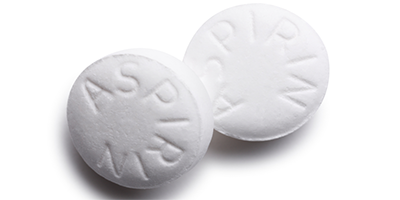Aspirin’s Quantum of Solace
The pain reliever aspirin can form two very similar crystal structures, but only one structure is commonly produced. Previous calculations were not able to explain this selectivity, which is indicative of a general difficulty in understanding polymorphism in molecular crystals. However, a new theoretical analysis that incorporates many-body quantum effects may be the cure for this vexing problem. As reported in Physical Review Letters, researchers have now shown that quantum fluctuations that lead to long-range dipolar (van der Waals) forces affect the vibrational modes of the aspirin polymorphs in different ways, determining the most stable structure.
The aspirin (acetylsalicylic acid) in your medicine cabinet is a molecular crystal with a well-defined lattice structure (called form I). In the last decade, however, researchers discovered that aspirin can assume a second crystal structure (form II) when grown in specially formulated solutions. When theorists considered only pairwise interactions between atoms, they predicted the two aspirin forms should have roughly equal energy and therefore should be equally abundant—in conflict with observations.
Recently, physicists have incorporated many-body interactions into their models, revealing how correlated electron fluctuations induce dipoles in a molecular crystal and thus produce long-range van der Waals forces. Anthony Reilly and Alexandre Tkatchenko of the Fritz Haber Institute of the Max Planck Society, Germany, applied these models to aspirin. The results show that the van der Waals interactions cause the vibrational modes in form I to be lower in energy than the modes in form II. These lower energy modes give form I higher entropy and thus make it the more thermodynamically stable structure. The authors believe that similar coupling of electron motion (van der Waals) and lattice motion (vibrations) might explain the molecular structures in other pharmaceutical drugs, as well as in substances like chocolate. – Michael Schirber





